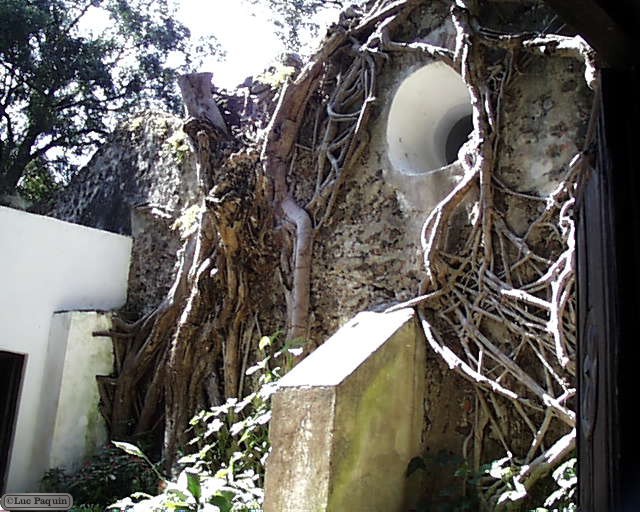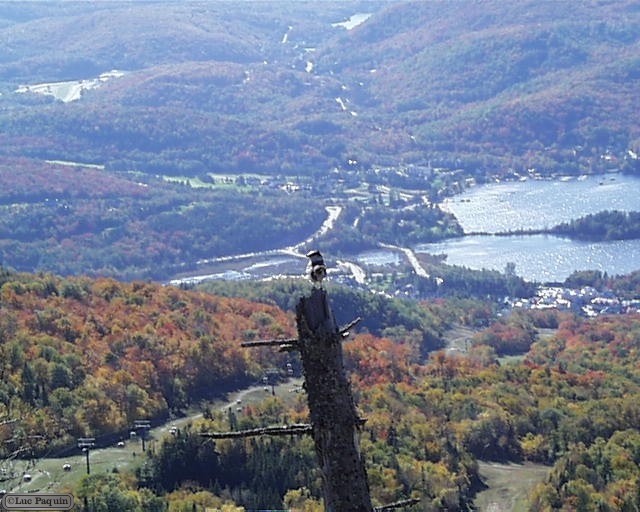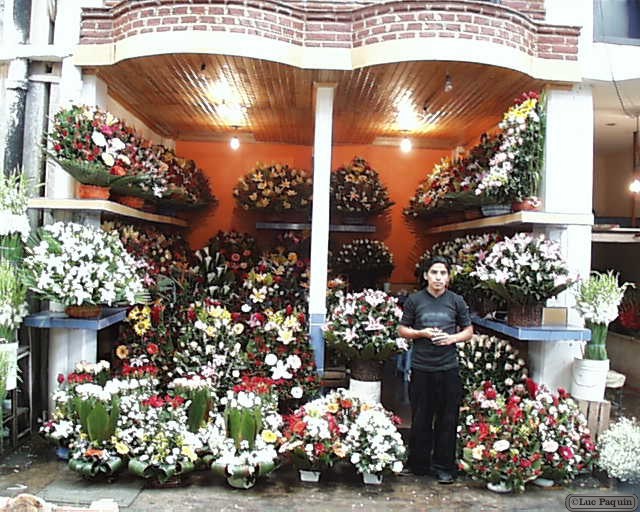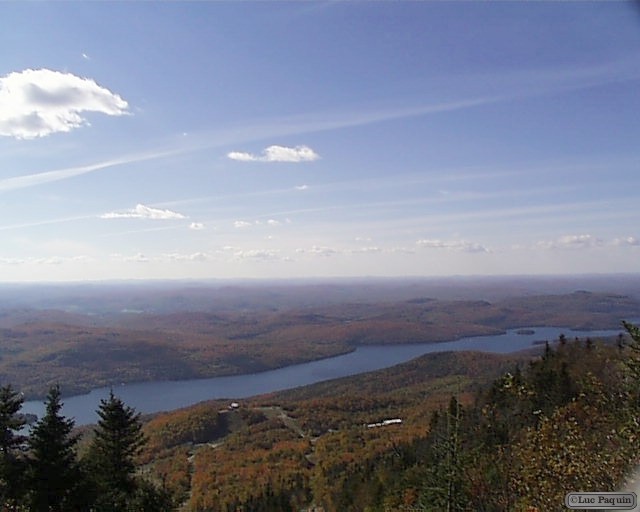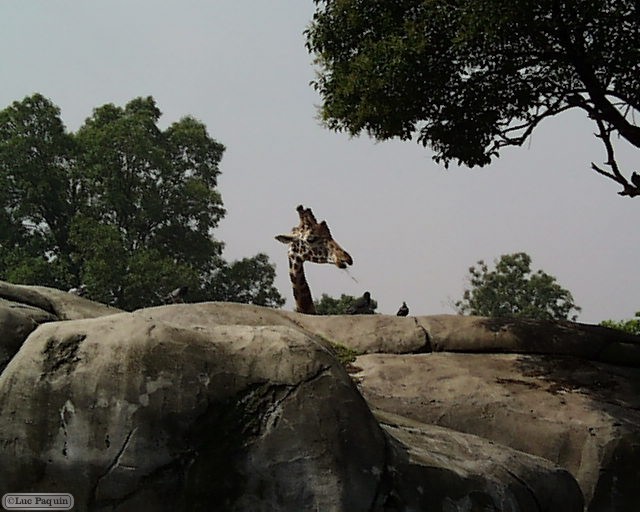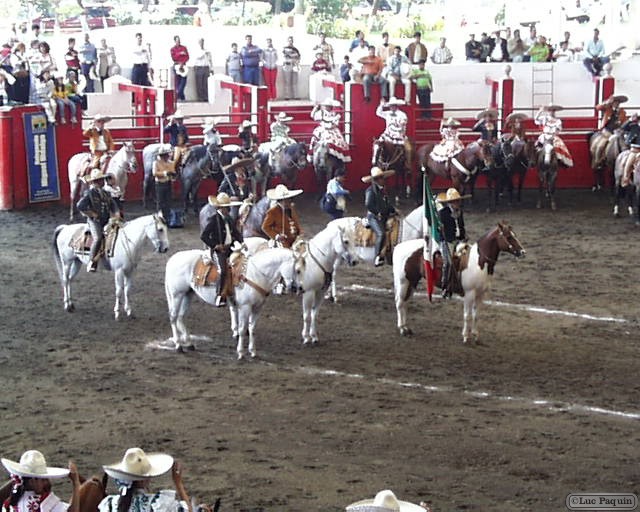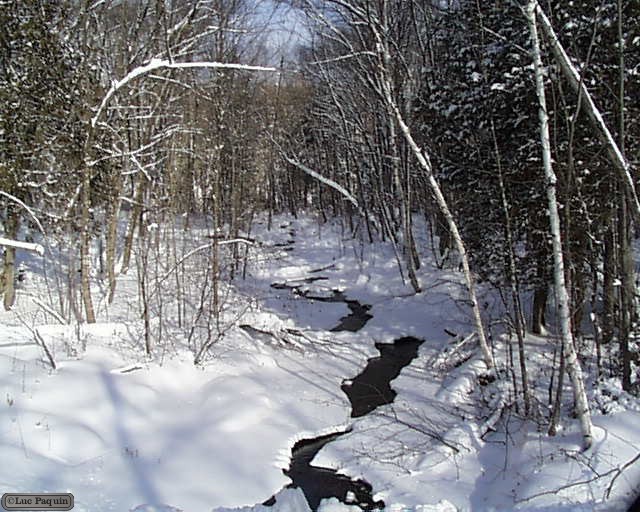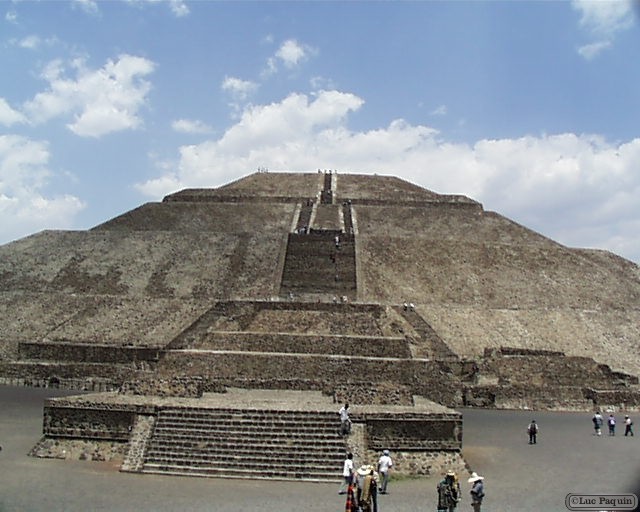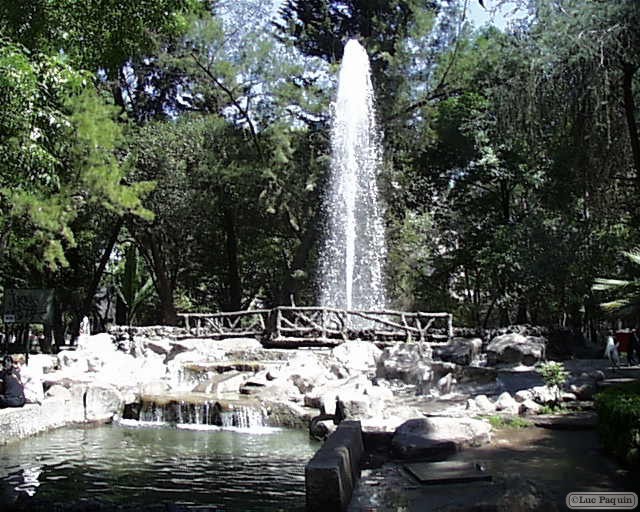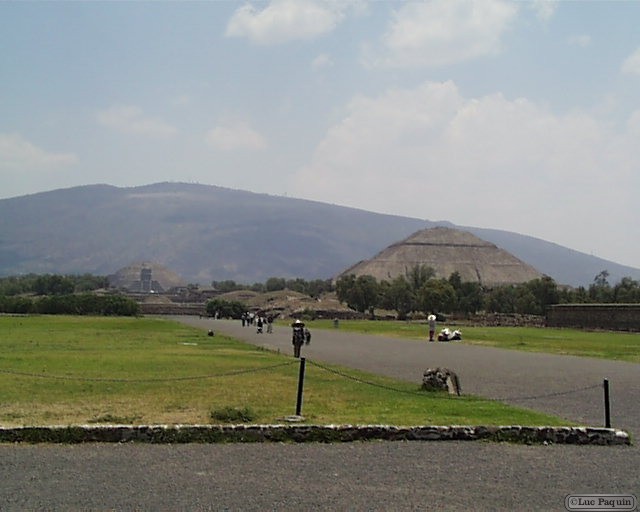Photo
Photos
Year: 1998 (November 13, 1998)
11″ x 8.5″
Media: Canon® Pro Platinum High Gloss Photo Paper
Printers: Canon® PIXMA
Color
Art: Photo
Artist: Luc Paquin
Hotel Hacienda Cocoyoc
Welcome to the Hotel Hacienda Cocoyoc, and Hacienda Resort and “The Paradise of America”. Surrounded by lush semi-tropical vegetation, this Hacienda Resort combines modern amenities and conveniences with the beauty of sixteenth-century architecture and tradition, resulting in a unique blend designed for your maximum comfort.
The are no elevators at this Hacienda Resort. Instead, you will find unlimited greenery, luscious gardens, fountains and bordered walkways. At an elevation of 4,000 feet above sea level and an average annual temperature of 68° F with clean, clear breezes blowing from the nearby snow-capped volcanoes, the perfect conditions are achieved for outdoor recreation and enjoyment.
Luc
Year: 2001 (October 2, 2001)
11″ x 8.5″
Media: Canon® Pro Platinum High Gloss Photo Paper
Printers: Canon® PIXMA
Color
Art: Photo
Artist: Luc Paquin
Mont-Tremblant, Quebec, Canada
Constructed by Joseph Bondurant Ryan, the ski resort Mont Tremblant Lodge began operation of their first chair lift in 1939. His family sold the resort in 1965 to a consortium of investors.
In 2002 the four municipalities in the area merged, Ville St. Jovite, Paroisse de Saint-Jovite, Mont-Tremblant, and Lac-Tremblant-Nord, becoming the amalgamated Ville de Mont-Tremblant. Afterwards the Municipality of Lac-Tremblant-Nord separated, effective 2006.
Luc
Year: 2004 (Mach 18, 2004)
11″ x 8.5″
Media: Canon® Pro Platinum High Gloss Photo Paper
Printers: Canon® PIXMA
Color
Art: Photo
Artist: Luc Paquin
Mercado de Jamaica
In Spanish, jamaica means the hibiscus flower.
This market is housed in three large naves covering a city block on the corner of Congreso de la Unión and Avenida Morelos in the Venustiano Carranza borough. The Metro Jamaica station on Line 9 is directly in front of the building. The market is one of the principal ones for fruits, vegetables, flowers and ornamental plants in the city and is bustling to chaotic, especially on weekends.
The market is best known for the sale of flowers and ornamental plants. There are 1,150 stands dedicated to flowers, flower arrangements and ornamental plants and associated accessories. 25.5% sell cut flowers, 26% sell flower arrangements, 4.3% sell flower pots and other accessories, 40.9% of the stalls are reserved for the trucks of flower producers and sellers and 3.2% sell ornamental plants, including those from the wild. The market sells about 5,000 types flowers and ornamental plants from the states of Puebla, Veracruz, Chiapas, Oaxaca, State of Mexico and Michoacán. The variety of flowers is wide from roses to those from the various tropics. There are both retail and wholesale sales, mostly to florists in Mexico City, but sales are also made to some of the surrounding states. There are even exports to the United States and Haiti.
Luc
Year: 2001 (October 2, 2001)
11″ x 8.5″
Media: Canon® Pro Platinum High Gloss Photo Paper
Printers: Canon® PIXMA
Color
Art: Photo
Artist: Luc Paquin
Mont-Tremblant, Quebec, Canada
The area was first settled in 1872 by parish priest Antoine Labelle, leading to formal establishment of the parish in 1879. A railway line from Montreal was completed to the village of St. Jovite in 1892, and extended to Lac Mercier in 1904. The Lac Mercier station would become the village of Mont Tremblant. In 1905 a hydroelectric dam was erected on the banks of the Ruisseau Clair and the Riviere du Diable, providing electricity initially for St. Jovite. Principal economic activities were agriculture and logging.
Luc
Year: 2003 (October 30, 2003)
11″ x 8.5″
Media: Canon® Pro Platinum High Gloss Photo Paper
Printers: Canon® PIXMA
Color
Art: Photo
Artist: Luc Paquin
Zoológico de Chapultepec
The zoo opened in 1924. The biologist Alfonso L. Herrera, founder of Chapultepec Zoo, wanted to recreate the famous zoo and aviary of Moctezuma II. He wanted to exhibit the native species for Mexicans, along with other species from the rest of the world. The collection would include mammals, birds and reptiles, as well as an aquarium.
After several visits to the United States, Herrera obtained the first animals for the zoo, three lion cubs and two American bison. The native animals came from different Mexican states like Sonora, Veracruz and Campeche, while other animals were exchanged with countries like India, France, Peru and Brazil. This first collection consisted of 243 animals.
Giraffe
The giraffe is an African even-toed ungulate mammal, the tallest living terrestrial animal and the largest ruminant. Its species name refers to its camel-like shape and its leopard-like coloring. Its chief distinguishing characteristics are its extremely long neck and legs, its horn-like ossicones, and its distinctive coat patterns. It is classified under the family Giraffidae, along with its closest extant relative, the okapi. The nine subspecies are distinguished by their coat patterns.
The giraffe’s scattered range extends from Chad in the north to South Africa in the south, and from Niger in the west to Somalia in the east. Giraffes usually inhabit savannas, grasslands, and open woodlands. Their primary food source is acacia leaves, which they browse at heights most other herbivores cannot reach. Giraffes are preyed on by lions; their calves are also targeted by leopards, spotted hyenas, and wild dogs. Adult giraffes do not have strong social bonds, though they do gather in loose aggregations if they happen to be moving in the same general direction. Males establish social hierarchies through “necking”, which are combat bouts where the neck is used as a weapon. Dominant males gain mating access to females, which bear the sole responsibility for raising the young.
Luc
Year: 2004 (June 13, 2004)
11″ x 8.5″
Media: Canon® Pro Platinum High Gloss Photo Paper
Printers: Canon® PIXMA
Color
Art: Photo
Artist: Luc Paquin
Charreada
A ‘Charreada’ a colorful Mexican rodeo at the Lienzo Charro here in Mexico City.
Lienzo Charro
A lienzo charro is an arena where charros hold the events of charreada, torneo de colas and bull riding.
A lienzo has two areas: one 60 by 12 metres and a second, circular area 40 metres in diameter. Charreada is a team competition in which teams go head-to-head to win points in different competitions. The team with the most points at the end wins. The torneo de colas, also known as the coleadero, is a multi- or single-competitor event in which a mounted charro throws a bull to the ground by catching its tail, wrapping it under his leg, and making a turn. The lienzo charro may be enclosed to accommodate bull-riding competitions.
Luc
Year: 2002 (April 2, 2002)
11″ x 8.5″
Media: Canon® Pro Platinum High Gloss Photo Paper
Printers: Canon® PIXMA
Color
Art: Photo
Artist: Luc Paquin
Lac des Trois Montagnes
Lac des Trois Montagnes, La Conception, QC, Canada. Snowfall.
Snow
Snow is precipitation in the form of flakes of crystalline water ice that falls from clouds. Since snow is composed of small ice particles, it is a granular material. It has an open and therefore soft, white, and fluffy structure, unless subjected to external pressure. Snowflakes come in a variety of sizes and shapes. Types that fall in the form of a ball due to melting and refreezing, rather than a flake, are known as hail, ice pellets or snow grains. The process of precipitating snow is called snowfall.
Luc
Year: 2005 (June 02, 2005)
11″ x 8.5″
Media: Canon® Pro Platinum High Gloss Photo Paper
Printers: Canon® PIXMA
Color
Art: Photo
Artist: Luc Paquin
Teotihuacan
The city is thought to have been established around 100 BC, with major monuments continuously under construction until about AD 250. The city may have lasted until sometime between the 7th and 8th centuries AD, but its major monuments were sacked and systematically burned around 550 AD. At its zenith, perhaps in the first half of the 1st millennium AD, Teotihuacan was the largest city in the pre-Columbian Americas, with a population estimated at 125,000 or more, making it at minimum the sixth largest city in the world during its epoch. Teotihuacan began as a new religious center in the Mexican Highland around the first century AD. This city came to be the largest and most populated center in the New World. Teotihuacan was even home to multi-floor apartment compounds built to accommodate this large population. The term Teotihuacan (or Teotihuacano) is also used for the whole civilization and cultural complex associated with the site.
Although it is a subject of debate whether Teotihuacan was the center of a state empire, its influence throughout Mesoamerica is well documented; evidence of Teotihuacano presence can be seen at numerous sites in Veracruz and the Maya region. The Aztecs may have been influenced by this city. The ethnicity of the inhabitants of Teotihuacan is also a subject of debate. Possible candidates are the Nahua, Otomi, or Totonac ethnic groups. Scholars have also suggested that Teotihuacan was a multiethnic state.
Luc
Year: 2004 (March 14, 2004)
11″ x 8.5″
Media: Canon® Pro Platinum High Gloss Photo Paper
Printers: Canon® PIXMA
Color
Art: Photo
Artist: Luc Paquin
Parque México
The Parque México, also known as the Parque San Martín, is a large urban park located in Colonia Hipódromo in the Condesa area of Mexico City. It is recognized by its Art Deco architecture and decor as well as being one of the larger green areas in the city. The park was built in the 1920s, when its surrounding neighborhood of Colonia Hipódromo was being established. It is the former site of a horse race track on an hacienda that belonged to the Countess of Miravalle. When this part of the hacienda was being partitioned and redeveloped into a housing area, environmental laws at the time did not permit housing on the former track. Instead it was turned into the current park. Today, Parque México is not only the center of Colonia Hipódromo, it is also the center of the entire La Condesa section of the city.
Luc
Year: 2005 (June 02, 2005)
11″ x 8.5″
Media: Canon® Pro Platinum High Gloss Photo Paper
Printers: Canon® PIXMA
Color
Art: Photo
Artist: Luc Paquin
Teotihuacan
Teotihuacan, also written Teotihuacán, was a pre-Columbian Mesoamerican city located in a sub valley of the Valley of Mexico, located in the State of Mexico 30 miles northeast of modern-day Mexico City, known today as the site of many of the most architecturally significant Mesoamerican pyramids built in the pre-Columbian Americas. Apart from the pyramids, Teotihuacan is also anthropologically significant for its complex, multi-family residential compounds; the Avenue of the Dead; and the small portion of its vibrant murals that have been exceptionally well-preserved. Additionally, Teotihuacan exported a so-called “Thin Orange” pottery style and fine obsidian tools that garnered high prestige and widespread utilization throughout Mesoamerica.
Luc
